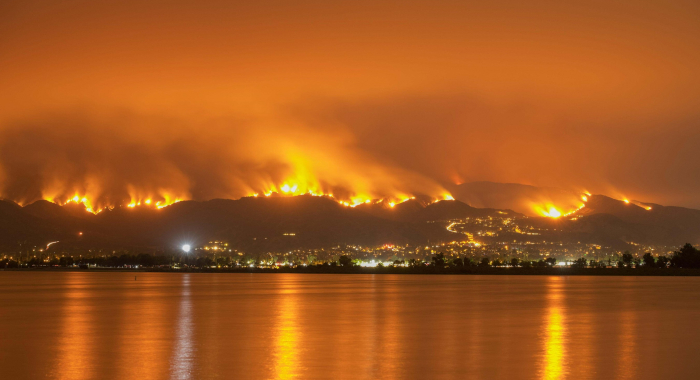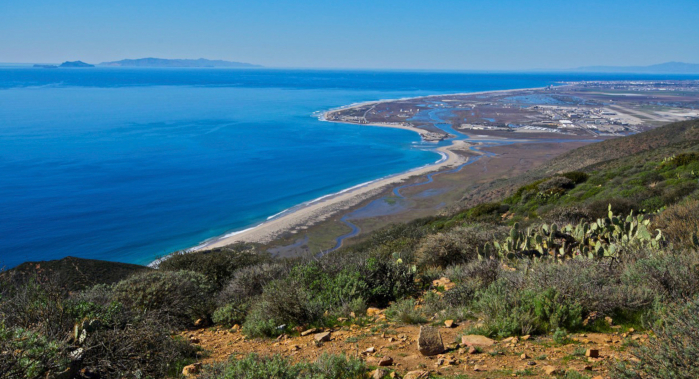Systematic, science-based conservation planning is a hallmark of the Conservancy. For biodiversity to thrive, habitats need to be protected, enhanced, or restored not just in the still wild places on the planet but also where people live and make their livelihoods.
Multi-disciplinary planning can help elucidate where the highest priority places are and what needs to happen there – and inform tradeoffs between conservation and other societal values.


Kelsey Jessup, Sophie S. Parker, John M. Randall, Brian S. Cohen, Rowan Roderick-Jones, Shona Ganguly, Jill Sourial
This paper presents results from Planting Stormwater Solutions, part of TNC’s Urban Conservation work in Los Angeles. The authors develop a methodology to prioritize siting of vegetated…P. Manley, K. Wilson, N. Povak
The Framework for Resilience offers a shared vision for resilience that recognizes the interdependent nature of social and ecological values. These values are described by ten pillars that represent…Kristen N. Wilson, Patricia N. Manley
Climate change, high-severity wildfire, and drought threaten the resilience of forests and communities in the Sierra Nevada. The Tahoe–Central Sierra Initiative (TCSI) is a partnership of state…Environmental Science Associates (ESA) for The Nature Conservancy and Naval Base Ventura County
Charlotte Stanley, Alyssa Mann, Walter Heady
The United States operates thousands of military installations in the U.S. and worldwide, worth about $1.2 trillion. These facilities are where personnel train and test weaponry, with…Walter Heady, Alyssa Mann, Stacey Solie, Bob Battalio, James Jackson, Kendall Lousen, and Bob Barnes
The U.S. Congress and the Department of Defense (DoD) have determined that climate change is a threat to national security and have required military installations to develop plans to improve the…Alyssa Mann, Walter Heady, Charlotte Stanley
TNC and the United States Navy partnered together to prepare for the impacts of climate change on Naval Base Ventura County (NBVC), Point Mugu in California. NBVC is a critical and strategic asset of…Alyssa Mann, Walter Heady, Charlotte Stanley
Barton H. Thompson, Jr., Melissa M. Rohde, Jeanette K. Howard, Sandi Matsumoto
In 2014, California’s landmark Sustainable Groundwater Management Act (SGMA) promised comprehensive management of California’s groundwater. This report, Mind the Gaps: The Case for Truly…Mary G. Gleason, Jennifer E. Caselle, Walter N. Heady, Vienna R. Saccomanno, Julie Zimmerman, Tristin Anoush McHugh, Norah Eddy
Global kelp forests are biodiverse and productive nearshore ecosystems that provide a wide range of ecosystem services, but they are at risk from both local stressors and global drivers of kelp loss.…Alyssa E. Semerdjian, H. Scott Butterfield, Robert Stafford, Michael F. Westphal, William T. Bean
This paper in the Journal of Wildlife Management combines nearly 20 years of remote sensing, field/trapping, and modeling data to develop a new approach to the identification and prioritization of…Jono R Wilson, Darcy Bradley, Kristina Phipps, Mary G Gleason
Overfishing threatens the health and resilience of the ocean. In response, the global conservation community has set ambitious targets for protecting biodiversity inside no-take marine reserves. Yet…Serena Lomonico, Mary G Gleason, Jono R Wilson, Darcy Bradley, Kate Kauer, Richard J Bell, Thomas Dempsey
Climate change poses unprecedented challenges to the sustainable management of wild capture fisheries. Management systems that improve the flow of information so that actionable steps can be taken are…Kirk Klausmeyer, Jeanette Howard, Melissa Rohde, Charlotte Stanley
The first step to sustainably manage groundwater dependent ecosystems (GDEs) is to identify where they are. The Nature Conservancy developed a statewide spatial database that provides locations of…Laurel Saito, Bill Christian, Jennifer Diffley, Holly Richter, Melissa M. Rohde, Scott A. Morrison
In this paper, we describe minimum provisions for planning, managing, and monitoring groundwater in a manner that collectively can lower the risk of harm to groundwater-dependent ecosystems and…H. Scott Butterfield, T. Rodd Kelsey, and Abigail K. Hart, Editors
As the world population grows, so does the demand for food, putting unprecedented pressure on agricultural lands. At the same time, climate change, soil degradation, and water scarcity mean that…Jennifer Sletten, Mimi D’Iorio, Mary G. Gleason, Alex Driedger, Timoth´e Vincent, Claire Colegrove, Dawn Wright, Virgil Zetterlind
Understanding the complex seascape of regulations that apply across U.S. ocean waters is critical for effective marine resource management. This study found that cumulative restrictions from…Sydney J. Chamberlin, Michelle Passero, Ashley Conrad-Saydah, Tanushree Biswas, Charlotte K. Stanley
California’s natural and working lands – its forests, grasslands, wetlands, farmlands, rangeland, and urban green spaces – provide Californians with numerous environmental, social,…Mary Kang, Debra Perrone, Ziming Wang, Scott Jasechko, Melissa M. Rohde
To ensure that California’s groundwater is sustainably managed in the future and over the long-term, current state definitions of what constitutes groundwater may need to be revised, according…